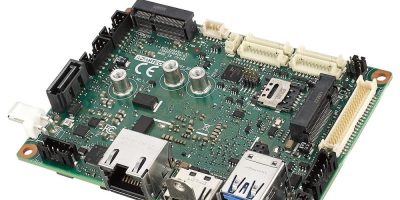Claimed to be the world’s most powerful microcontrollers (MCUs), the RA8 series from Renesas Electronics deliver breakthrough performance of over 3000 CoreMark points. It is also characterised by fully deterministic, low latency, real time operation.
The MCUs are believed to be the first to implement the Arm Cortex-M85 processor, enabling the new devices to deliver industry-leading 6.39 CoreMark / MHZ performance. They are part of Renesas’ RA family of MCUs based on Arm Cortex processors. Existing designs built for other RA devices can be ported to the new RA8 MCUs.
This level of performance will allow system designers to use the MCUs in applications that previously required microprocessors, advised Renesas
The RA8 series MCUs deploy Arm Helium technology, Arm’s M-Profile vector extension that provides up to a four-fold performance boost for digital signal processor (DSP) and machine learning (ML) implementations versus MCUs based on the Arm Cortex-M7 processor. This performance uplift can enable customers to eliminate an additional DSP in their systems for certain applications.
The MCUs enable edge and endpoint devices to implement natural language processing in voice AI and predictive maintenance applications, using Helium to accelerate the neural network processing.
“The advent of AI is increasing demand for intelligence at the edge and endpoints to serve new applications across diverse markets including industrial automation, smart home, and medical,” said Paul Williamson, senior vice president and general manager, IoT line of business, Arm. “Renesas’ new MCUs, built on Arm’s highest-performing and most secure Cortex-M processor to date, are specifically optimised for signal processing and ML workloads, and will be game-changing for innovators looking to address the growing AI opportunities in the embedded and IoT space, without compromising on security,” he added.
For security, the RA8 series MCUs’ Cortex-M85 core includes Arm TrustZone technology which enables isolation and secure / non-secure partitioning of memory, peripherals and code. The MCUs introduce the most advanced Renesas Security IP (RSIP-E51A) that provides leading edge cryptographic accelerators and supports a true secure boot. Other security features include immutable storage for a strong hardware root-of-trust, Octal SPI with decryption-on-the-fly (DOTF), secure authenticated debug, secure factory programming and tamper protection.
The Armv8.1-M architecture introduces Pointer Authentication and Branch Target Identification (PACBTI) security extension that provides mitigation for software attacks targeting memory safety violations and memory corruptions. The RA8 Series also targets PSA Certified Level 2 + Secure Element (SE), NIST CAVP and FIPS 140-3 certifications.
Low Power Features
Renesas has begun volume shipments of the first devices in the RA8 Series, the RA8M1 Group. These are general-purpose devices that address diverse compute intensive applications in industrial automation, home appliances, smart home, consumer, building/home automation, medical and AI in applications such as fingerprint scanners, thermostats, PLC, smart meters and home hubs.
They are available in a choice of packages: 100/144/176 LQFP, 224 BGA and supported by Flexible Software Package (FSP) to accelerate application development by providing all the infrastructure software needed, including multiple RTOS, BSP, peripheral drivers, middleware, connectivity, networking, and security stacks as well as reference software to build complex AI, motor control and cloud solutions.
Renesas is also shipping the RA8M1 Group Evaluation Kit (RTK7EKA8M1S00001BE).







